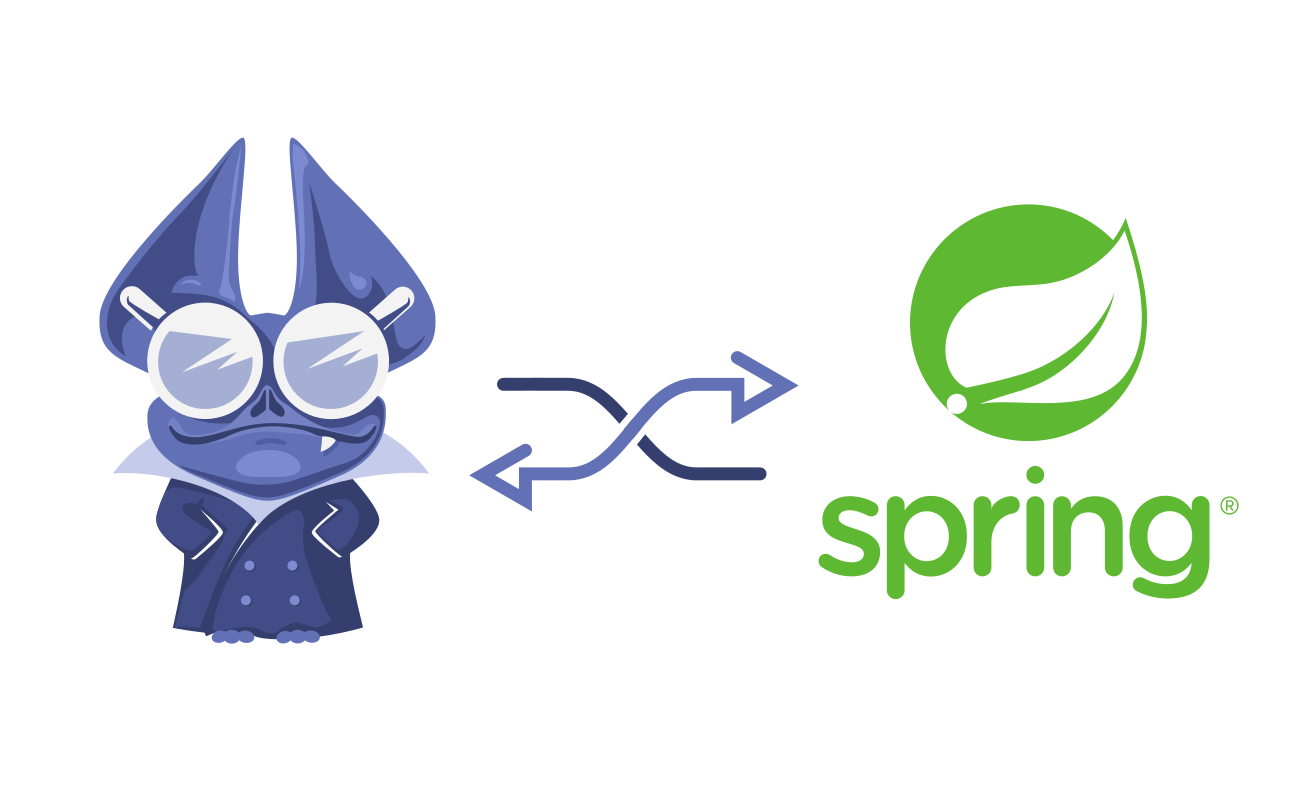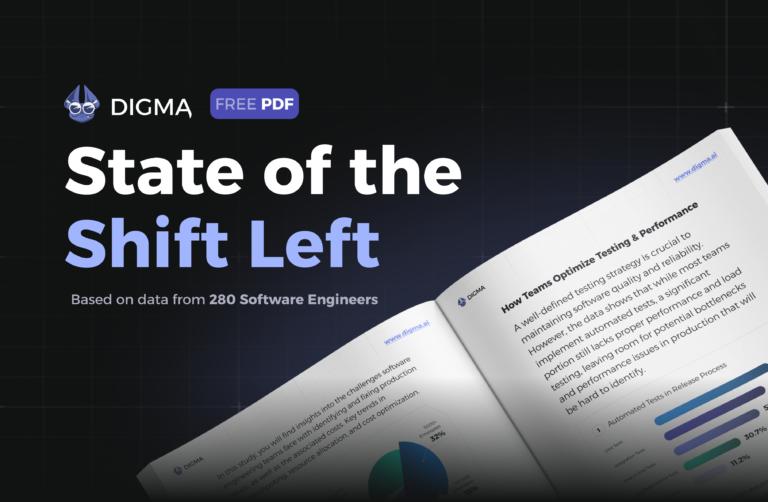The traditional approach to observability has focused heavily on production environments, emphasizing real-time monitoring to detect and resolve issues affecting live users. However, there’s a growing recognition that observability in pre-production environments offers a new and promising path to improve software quality and accelerate delivery.
By shifting the focus on finding issues earlier in the SDLC, teams can prevent problems rather than deal with their impact, validate system behavior more holistically, and address areas that are often overlooked in production-only observability.
Pre-Production Monitoring: Reducing the High Cost of Production Bugs
Table of Contents
Cost of fixing Production Issues:
1. Teams spend 20–40% of their time on fixing production issues:
Preventing issues before they reach production is key to saving time and resources. Studies show teams spend 20–40% of their time resolving production issues. Every issue prevented frees up team capacity and improves velocity.

2. Example of a 10% reduction in production issues:
- A 100-developer team spends 40% of its time on issue resolution.
- Reducing production issues by 10% reclaims 4% capacity, with an additional 1.6% from reduced context-switching penalties.
- Total reclaimed capacity: 5.6%.

This chart illustrates the impact of a 10% reduction in production issues for a 100-developer team.
3. Direct team productivity gains for every 1% reduction in production issues:
- A team spending 25% of its time on production issues saves 0.25% capacity per 1% improvement.
- Preventing 20% of production issues equates to 5% of reclaimed team capacity.

This line chart visualizes team productivity gains from reducing production issues. It shows:
- 1% Reduction: Reclaims 0.25% of team capacity.
- 10% Reduction: Reclaims 2.5% of team capacity.
- 20% Reduction: Reclaims 5% of team capacity.
3 Ways Pre-Production Observability Improves Software Delivery, Quality, and Reduces Costs
- Reducing costs by detecting issues earlier:
Fixing production bugs costs 6 times more than addressing them in pre-production, according to IBM. Higher costs of fixing bugs in production are due to several factors:
- Reduced team productivity
- Operational Disruption
- End user Impact
- Revenue Loss from Production Issues

Source: IBM *The Systems Sciences Institute at IBM reported that it costs 6x more to fix a bug found during implementation than to fix one identified during design. Furthermore, according to IBM, the cost to fix bugs found during the testing phase could be 15x more than the cost of fixing those found during design.
2. Making integration and e2e testing in pre-production more useful with tracing
With pre-production observability R&D teams can:
- Detect latency spikes, resource overloads, or hidden dependencies that might not break tests but cause issues later.
- Ensure component interactions work as expected under realistic conditions.
- Increase test coverage with tracing: by identifying gaps and creating more complete test cases.
3. Assessing issues in application performance that traditional tests often miss but impact user experience.
With pre-production observability R&D teams can:
- Track latency, throughput, resource usage, and error rates during test runs, and detect deviations from expected performance levels.
- Identify the root cause and origin of regressions, enabling faster resolution.
- Simulate real-world conditions by validating performance under realistic or stress-test conditions.
Here’s a comparison table highlighting the differences between Digma/Pre-Production Observability and Traditional APMs:
| Pre-Production Observability | Traditional APMs | |
| Environment focus area | Designed specifically for pre-production environments to address issues before production. | Focused on monitoring live production environments to detect and resolve real-time issues. |
Telemetry data requirements | Works with fragmented and incomplete telemetry data, significantly reducing operational overhead. | Relies on vast amounts of telemetry data for insights, which increases storage and operational costs. |
| Proactive insights | Provides proactive insights by predicting risks during testing. | Reactive in nature, detecting issues only after they occur in production. |
| Integration with Code | Correlas anomalies directly to specific lines of code, commits, or functions, making debugging faster. | Does not directly link issues to the codebase, requiring manual investigation and debugging. |
Performance Validation | Tracks key metrics like latency, throughput, and resource usage during tests, enabling validation under real-world or stress-test conditions. | Focused on live production performance with minimal insights during pre-production. |
| Scalability | Efficiently aggregates data on the fly, allowing scalability without incurring high infrastructure costs. | Scalability can become cost-prohibitive in pre-production due to the need for extensive data ingestion and storage. |
| Cost Efficiency | Avoids the need for large-scale telemetry ingestion and expensive pipelines. | High costs of large-scale data storage and processing, when extended into pre-production. |
| Developer Support | Designed for developers with integration into their workflows. | Designed for DevOps teams. |
Why Digma is the Right Solution for Pre-Production Observability
Digma was designed to address the unique challenges of pre-production observability by focusing on pre-production environments. It prioritizes developers, simplifies problem-solving, reduces costs, and helps teams confidently deliver high-quality software.
With Digma, R&D Teams Can:
1. Get Predictive insights in pre-production environments
Digma uses intelligent algorithms to analyze partial telemetry data and extrapolate how issues might manifest in production. It is designed to work effectively with the fragmented and incomplete data typical of testing, staging, and development phases.
- Proactive Issue Prediction: Digma identifies potential failure points and provides actionable insights during integration or performance testing.
- Faster Feedback Loops: Developers can validate code changes in near real-time.
2. Focus on the root cause: Eliminate the noise
Traditional observability tools overwhelm teams with raw telemetry data, creating cognitive and operational burdens. This delays resolution and diverts resources.
Digma eliminates this overhead by focusing on the following:
- Digma maps anomalies to specific code, commits, or functions for actionable fixes.
- Digma automates debugging with curated insights to replace manual data analysis.
- Digma filters irrelevant metrics, letting teams focus on solving problems instead of searching for them.
3. Reduce observability direct costs
By specializing in pre-production observability, focusing on root causes, and avoiding the high infrastructure costs of traditional APMs, Digma directly reduces production issue costs in several ways:
- Efficient data processing:
- Reduction in Telemetry Overhead: Digma processes telemetry on-the-fly, reducing infrastructure and operational costs. Unlike traditional APMs, Digma uses aggregated, relevant data to minimize costs.
- Reduction in Telemetry Overhead: Digma processes telemetry on-the-fly, reducing infrastructure and operational costs. Unlike traditional APMs, Digma uses aggregated, relevant data to minimize costs.
- Preventing production issues:
- By identifying and addressing potential issues in pre-production, Digma reduces the number of costly production incidents.
- Example: Preventing 10% of production issues in a 100-developer team can reclaim 5.6% of team capacity, allowing developers to focus on planned tasks rather than firefighting.
- Reducing (MTTR):
- Faster Debugging: Digma streamlines debugging by mapping issues to specific code, commits, or functions, cutting down investigation time.
- Example: A 40% reduction in investigation time for a team spending 25% on production issues can reclaim 4% productivity.
- Lowering Context-Switching Costs:
- Digma decreases context-switching penalties, which can add 20–70% extra effort to planned tasks.
Conclusion: How Digma Stands Out
Digma redefines what observability means for pre-production environments, addressing the core challenges of early issue detection, actionable insights, and cost-efficiency.
Digma enables R&D teams to:
- Proactively prevent production issues before they occur.
- Reduce the cognitive and operational burden of analyzing raw telemetry data.
- Lower operational costs by avoiding expensive telemetry storage and data pipelines.
- Deliver high-quality, production-ready software faster and more efficiently.





